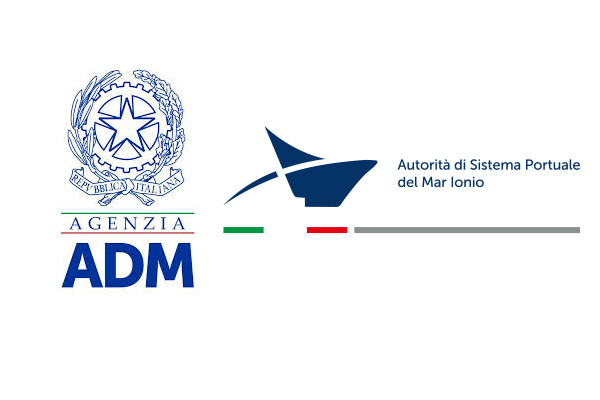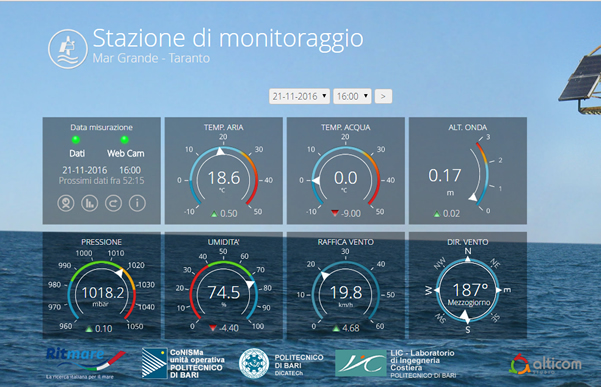
TARANTO, 16 FEBBRAIO 2021 – Il percorso di valorizzazione del porto di Taranto e di creazione di un ambiente di business in grado di attrarre e facilitare le scelte localizzative degli investitori nazionali e internazionali segna in questi giorni un passaggio importante: con l’emanazione della Ordinanza del Presidente dell’Autorità di Sistema Portuale del Mar Ionio (AdSPMI), in data odierna, viene infatti approvato ed emanato il Regolamento per il funzionamento della Zona Franca Doganale del Porto di Taranto, istituita dalla Legge 27 dicembre 2019, n.160, la cui perimetrazione è stata definita su proposta del Presidente dell’AdSP con proprio Decreto del 13 Marzo 2020 e approvata con Determinazione Direttoriale n. 128586/RU del 28 aprile 2020 della Direzione Generale dell’Agenzia Dogane Monopoli (ADM).
Il Regolamento, frutto di una intensa collaborazione tra AdSPMI e ADM, definisce i ruoli di governance della Zona Franca Doganale (ZFD) del porto di Taranto e disciplina le attività a carico degli operatori economici.
Le aree interessate dalla perimetrazione della Zona Franca riguardano 11 lotti, pari ad una superfice totale di 162,89 ettari ricompresi nella circoscrizione demaniale marittima del Porto di Taranto e di competenza dell’AdSPMI che è identificato come Soggetto Gestore della ZFD. L’attività di delimitazione delle aree consisterà nella costruzione di apposita recinzione e nell’individuazione di varchi d’ingresso e di uscita sottoposti a vigilanza doganale, secondo criteri e modalità definiti d’intesa con l’ADM, anche in connessione con il più ampio processo di digitalizzazione del porto.
Nella ZFD – in cui potranno essere introdotte sia merci unionali che non unionali – sarà, quindi, possibile svolgere attività di natura industriale e logistica nei margini di quanto consentito dalla normativa comunitaria. Agevolare il regime di stoccaggio a lungo termine, manipolazioni usuali ed altre attività legate alle merci in ambito portuale - e quindi in prossimità dei punti di arrivo/partenza da e verso le aree economiche di produzione e/o di consumo - consente alle commodities di acquisire quel valore aggiunto tale da renderle maggiormente appetibili e competitive sul mercato.
“Con l’entrata in vigore del Regolamento per il funzionamento della Zona Franca Doganale – spiega il Presidente dell’AdSP del Mar Ionio, Sergio Prete - si avvia la fase operativa di uno strumento di grande valore strategico per gli operatori che intendano insediarsi nel porto di Taranto o utilizzare le aree portuali e retroportuali per implementare attività produttive, commerciali o di servizi potendo godere di benefici esclusivi, di natura doganale, commerciale, finanziaria e logistico-operativa. La ZFD del porto di Taranto, fortemente voluta dalla Presidenza del Consiglio, dalla Regione Puglia e dal Comune di Taranto, si configura come ulteriore elemento di attrattività per lo scalo jonico ed il suo retroporto e certamente contribuirà alla crescita del nuovo terminal contenitori e delle altre imprese portuali”.
“Con l’avvio operativo della Zona Franca Doganale del Porto di Taranto – spiega Marcello Minenna, Direttore Generale dell’Agenzia Dogane e Monopoli – si aprono grandi prospettive di crescita per le imprese che, attraverso la possibilità di stoccare, manipolare e trasformare le merci in sospensione dei diritti doganali, potranno sviluppare le proprie attività economiche, produttive e logistiche sfruttando al massimo le potenzialità della ZFD. Tale traguardo è frutto della proficua sinergia istituzionale tra ADM e AdSPMI che vede le due Amministrazioni collaborare anche nell’ambito di altre iniziative, come delineate nel Protocollo di Intesa sottoscritto nell’ottobre 2020.”
CUSTOMS FREE ZONE OF THE PORT OF TARANTO: THE REGULATIONS GOVERNING ITS FUNCTIONS AND OPERATIONS IS NOW IN FORCE
PORT OF TARANTO, 16 FEBRUARY 2021 – These days, the process underlying the enhancement of the port of Taranto and the creation of a business environment capable of attracting and facilitating the localization of national and international investors marks another important step: with the issue of the Presidential Ordinance of the Port Network Authority of the Ionian Sea (PNAIS), the Regulations for the functioning of the Customs Free Zone of the Port of Taranto is now in force.The Customs Free Zone (CFZ) was established by law n. 160 of 27th December 2019 and its perimeter was defined by Presidential Decree of 13th March 2020 of the PNAIS, then approved by Directorial Determination no. 128586/RU of 28th April 2020 of The Customs and Monopolies Agency.
The Regulations – that is the result of a close cooperation between the PNAIS and the Customs Agency - defines the governance of the Customs Free Zone (CFZ) of the port of Taranto and regulates the activities borne by the economic operators. The perimeter of the CFZ concerns 11 lots, equal to a total area of 162.89 hectares included in the maritime state-owned district of the Port of Taranto, under the jurisdiction of the PNAIS as Managing Authority of the Zone. The delimitation of the areas will consist in the construction of a special fence and in the identification of entry and exit gates subject to customs supervision, according to criteria and methods defined in agreement with the Customs Agency, also in connection with the wider digitalization process launched in the port. Therefore, within the areas covered by the CFZ - in which both EU and non-EU goods can be introduced - it will be possible to carry out industrial and logistics activities, in accordance with the relevant EU legislation. The facilitation of long-term storage regime, usual handling and other activities related to goods in the port domain - and therefore close to the arrival / departure gates, to and from the economic production and / or consumption areas – will allow the commodities to acquire the added value that make them more attractive and competitive on the market.
"With the entry into force of the Regulations for the functioning of the Customs Free Zone - explains the President of the PNAIS, Sergio Prete - the operational stage of a tool of great strategic value is now available for those operators wishing to settle their business in the port of Taranto or to use port and back-port areas to implement productive, commercial or service activities, being able to enjoy commercial, financial and logistical-operational exclusive benefits. The CFZ of the port of Taranto, strongly supported by the Presidency of the Council of Ministers, the Puglia Region and the Municipality of Taranto, represents a further attraction for the port and the back-port domain and will certainly contribute to the growth of both the new container terminal and other port companies”.
“With the operational start-up of the Customs Free Zone - explains Marcello Minenna, Director General of the Customs Agency – great growth perspectives are now opened for those companies which, through the possibility of storing, manipulating and transforming goods free of customs duties, will be able to develop further economic, production and logistics activities by exploiting the benefits of the CFD. This goal is the result of the fruitful institutional synergy between the Customs Agency and the PNAIS which sees the two administrations also collaborate in other initiatives, as outlined in the Memorandum of Understanding signed in October 2020”.


























